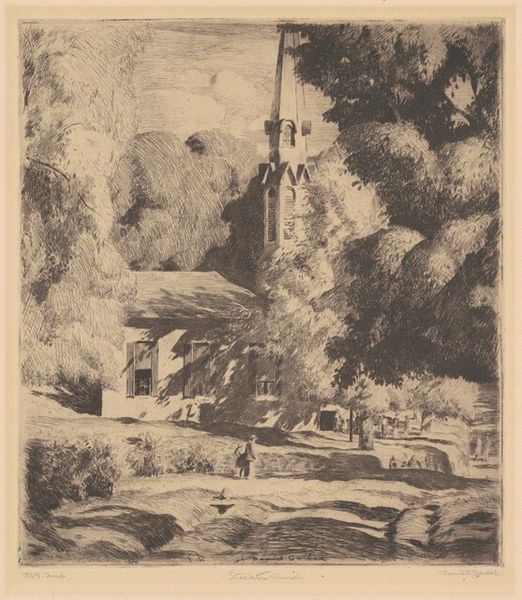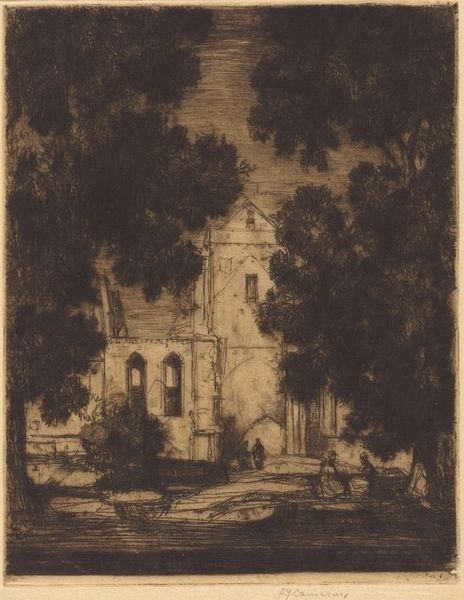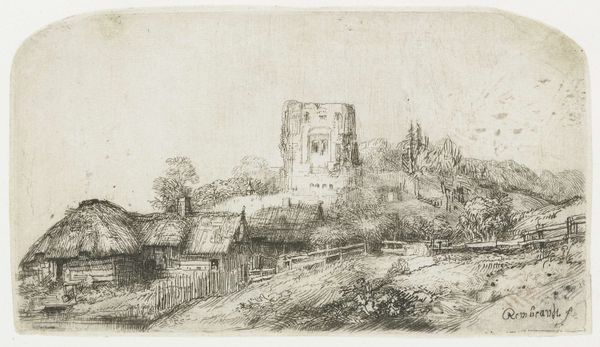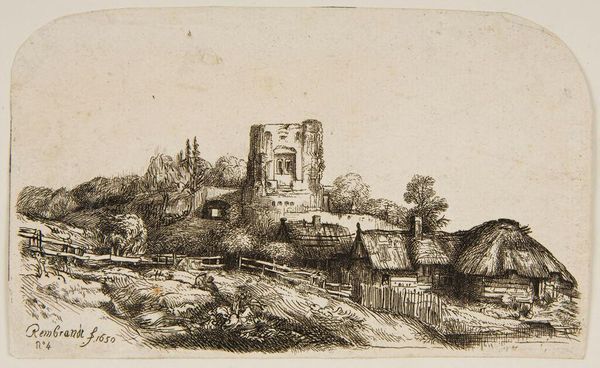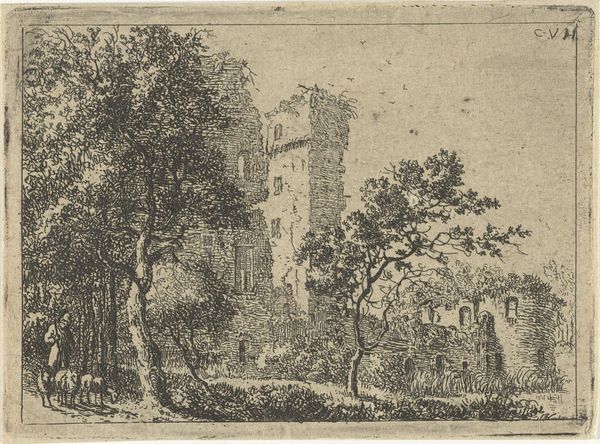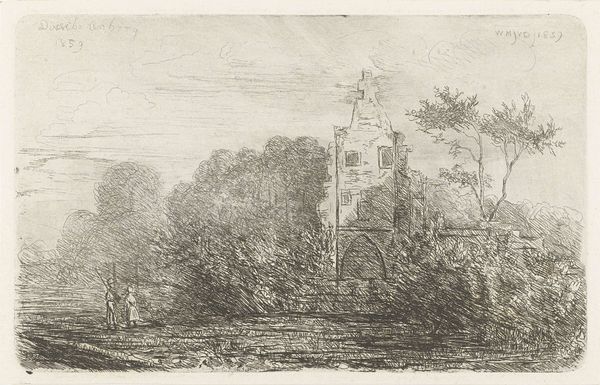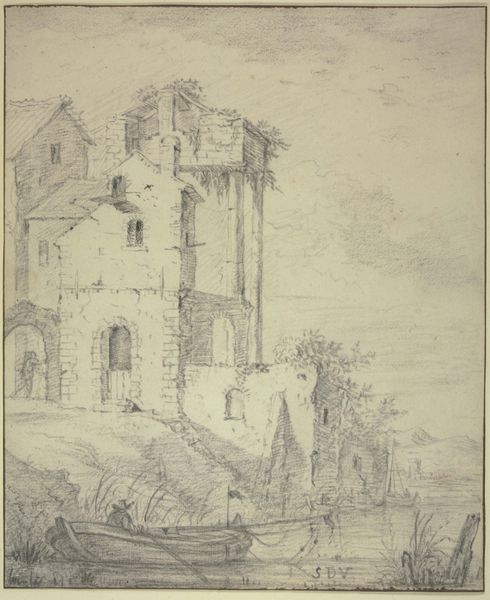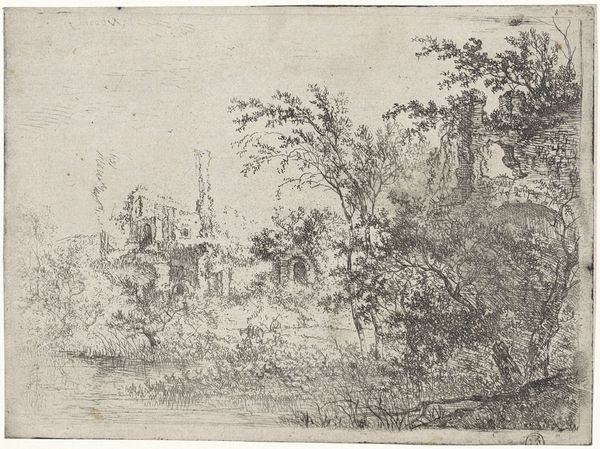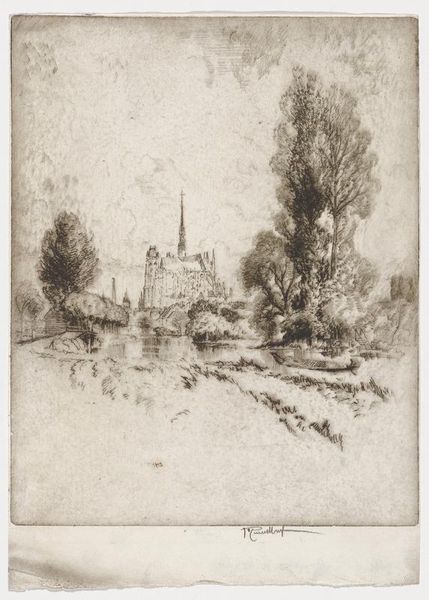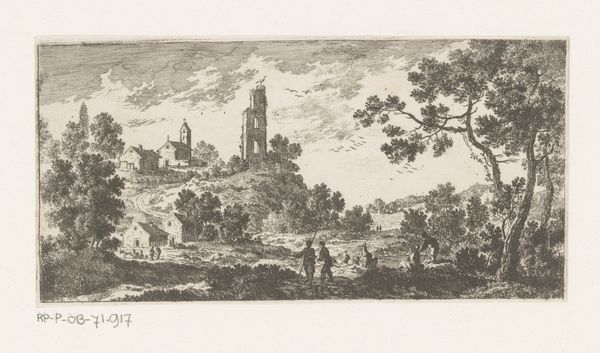
Copyright: National Gallery of Art: CC0 1.0
Editor: This is "Nigg Church, No. 2," an etching made in 1910 by James McBey. It’s incredibly detailed; I’m fascinated by the intricate line work. How do we unpack such a visually rich print? Curator: We must consider the labor embedded in the etching process itself. The painstaking work with acid and metal, the physical act of pressing the print. What does that repetitive action signify? Editor: You mean, is McBey making a statement by using a process with a rich history? Curator: Precisely! Etching was, and still is, a laborious craft. In 1910, there was a rising market for prints; they were cheaper and easier to reproduce than paintings, putting art within reach of the emerging middle class. How might the rise of the market influence McBey? Editor: He’s using an established technique to reproduce an image more affordably and make it available for mass consumption? I suppose that challenges our notion of the artist as solely focused on original creations. It’s mass production. Curator: Consider how his choice of subject matter--a church, deeply rooted in place and tradition—engages with that market. Who was his intended audience, and how would they interact with this image of "Nigg Church"? What elements like landscape play into the experience and ownership of a McBey's creation? Editor: So, instead of focusing solely on McBey's artistic vision, we’re thinking about the role the work plays in its specific moment. It’s more about how it circulates than the artist’s touch? Curator: Both are essential! The artist's choice of material and process dictates access and determines who consumes his art, and how. McBey's artistry intersects with commerce and cultural consumption in profound ways. Editor: This definitely gives me a completely fresh perspective on this print. I wouldn’t have thought of the social implications behind what seemed to be just a landscape of a church.
Comments
No comments
Be the first to comment and join the conversation on the ultimate creative platform.
